At the end of March, the Art Encounters Foundation opened the exhibition At the edge of the world, curated by Diana Marincu, the artistic director of the Foundation, and artist Ciprian Mureșan. The project marks the start of the ART-UP initiative, which will promote new art productions and artistic research, materializing international collaborations with the stake of developing the cultural scene in Romania.
At the edge of the world is a selection of works by young artists from close generations in Romania and Europe, which synthesizes and relates a series of concerns that revolve predominantly around several visual media such as drawing, painting, installation, video, and others. The exhibition reveals the experimental laboratory of artists: Andrei Arion, Csilla Bartus, Dan Beudean, Ole Blank, Floriama Cândea, Eduard Constantin, Norbert Filep, Camilia Filipov, Lucia Ghegu, Alexandra Mereuți & Sebastian Danciu, Alexandra Satmari and Lucía Simón Medina, drawing a analytical red thread regarding possible boundaries between real and fictional worlds.
At the Edge of the World was designed as a project around dialogue and exchange of ideas, the exhibition program also including related events, in order to actively involve the general public in the activities of the Foundation. These included a brunch with guest artists, introductory courses in contemporary art with art historian and teacher Maria Orosan Telea, and a workshop on art production and critical theory with Justin O’Shaughnessy and Andrea Phillips.
The exhibition emphasizes drawing as a central tool – visually and conceptually – for the construction and deconstruction of particular universes, marked by uncertainty and anxiety – as defining factors of a volatile reality. Drawing becomes a versatile and at the same time fluid “weapon” in combining several features. It transforms into sound, space, imprint, network, being both harsh and sensitive, in order to map a strange and altered world. Whether it appears in a more classical form, graphite on crumpled paper on wooden board in Dan Beudean’s intimate compositions, as three-dimensional linear statements in Andrei Arion’s sculptural objects, or as digital graphic paths that reconstruct the image-impression of a house in the video work of Alexandra Mereuți and Sebastian Danciu, the drawing is constituted as a living process, like a breath, in the decryption and interpretation of the immediate reality.
Exploring the potential of this visual environment, and its capacity for transformation in relation to matter and space, becomes a common denominator in most works, the experienced perspective of an artist working with drawing – Ciprian Mureșan – playing an important role in the selection and dialogue of in the gallery, as well as the complementary curatorial vision of Diana Marincu.
At the edge of the world becomes a project that revolves around the idea of work in progress from several perspectives, without having the predictable aspect of this concept. The exhibition presents the approaches of young artists, with an artistic discourse located in an area of experiment based on process, about a world of the trumoil, marked by two years of pandemic and now by an unpredictable war. In short, a reality shattered by insecurities, which we all try to manage, to rebuild on a personal and private level in a work-in-progress action that will actually help us cope. At the edge of the world directly and indirectly, geographically, but also metaphorically calls out a positioning and a possible affective attitude in relation to these overwhelming events. But being on the sidelines, or being peripheral does not necessarily mean a disadvantage – this position allows a detachment or even privileged spot for artists – a perspective from which, in the name of freedom, can build substantial and authentic visions of immediate reality, questioning the boundaries between visible and invisible.
Andrei Arion, through the works Progressive pike-spear (2021), Tongs for a specific item (2021), Self-sufficient Ladder (2021) imagines absurd sculptural tools made of resistant materials (steel), designed for temporary use and inspired by the world of video games , fantasy/sci-fi movies/cartoons, reminiscent of weapons, armor, or other objects with excessive visual appearance, lacking in functionality. Csilla Bartus, in the installations Unknown (2019-2022), Preserve Nature (2020) and Pseudopodia (2022), Pseudopodia / Ghost (2021), presents paradoxical situations – about the relationship between natural and artificial – by analyzing a plastic material integrated in its nature and ability to camouflage. The intrusion becomes adaptable, so the constituent elements of the installations create a visual ecosystem of differences and strangeness on the gallery wall.
Dan Beudean “cuts” fragments of everyday life (like film frames), in a series of Untitled graphite drawings (2021, 2022), having as central subject the subtle relations that are drawn between the interior and the exterior space. Starting from the idea of isolation imposed by the pandemic, in which the home becomes a space where the artist feels captive, and the only way of survival becomes drawing, Dan Beudean designs some highly refined graphic compositions, with details and preciousness that the camera does not capture in their documentation. The line combines several qualities: it can be soft, it can be hard, it describes and envelops the shape in a bright and quiet atmosphere, at the same time having a graphic and pictorial character. Thus, the artist concentrates within relatively small drawings the sensitivity of the relationship between presence and absence, integrated in a metaphysical atmosphere. Dan Beudean’s compositions become indispensable in a curatorial project that explores a visual environment such as drawing, as they encompass the entire spectacular keyboard of all that it entails.
Ole Blank presents two interventions: the video installation Geoengineering; ThunderDome, documenting a performance in Cologne in 2020. An FPV drone captures the lightning rod of one of the two towers of Cologne Cathedral, transmitting the image from the built-in camera via radio transmission to the pilot’s VR glasses. Thus, the drone becomes a technical extension of the artist’s physical perception of space. After a series of attempts to insert lightning in the lightning rod, the tracking route ends on the roof of a parking lot, revealing the position of the pilot / artist. Ole Blank’s second installation is called Digital Unpowerment; EMP Device (functional) (2020) and consists of objects reminiscent of weapons from science fiction films of the late 1990s / early 2000s, illustrating an arsenal of contemporary warfare.
Floriama Cândea’s Sensitive Objects 01 (2021) installation explores the relationship between natural and artificial, organic / inorganic, between the original and the copy, the component elements thus problematizing new narratives about the relationship between man and his external environment. Floriama Cândea is concerned with BioArt, an artistic practice that uses life and organic matter in various forms. Sensitive Objects 01 consists of combining biological materials (decellularized leaves) with non-biological materials (replicas of silicone leaves), whose visual similarity draws uncertainty about the nature of matter and its integrity. Another narrative line of decryption for the artist’s work is provided by the mimetic movement of silicone leaves, seeking to illustrate the nasal movements of the plant world (non-directional responses to external stimuli: mechanical stimuli, humidity, temperature, light irradiation). Sensitive Objects 01 thus comprises three leaf replicas, which perform three distinct types of movements. The first is driven by an EKG sensor, which records the heartbeat of the artist and transfers it in the form of an electrical impulse to a motor that moves the leaf at this rate; the second reacts to the presence of people in the exhibition space through a sensor that records the movement and transfers it by an electrical impulse to an engine; and finally, the third one that performs movements like the seconds of a clock, thus counting seconds, receiving electricity. Sensitive Objects 01 is thus a complex and spectacular installation both visually and as a technical and biological process.
The work 330,000 (2017-2018) by Eduard Constantin was inspired by the number of Romanian soldiers who died in the First World War, representing an intention to raise awareness and eliminate the abstraction that revolves around the number and anonymity of victims. The work is described by the artist as an “abstract cloud”, which reveals to the viewer, as they approach, 330,000 silhouettes of red soldiers, stamped by juxtaposition. The composition concentrates an organic, visceral rhythm, reminiscent of blood vessels, emphasizing the drama of anonymous sacrifice. Eduard Constantin also exhibits Pressure of Time. Star Trek The Original Series (2018) and Cold War (2021). The latter documents the process by which missiles melt and fall, as a hint/commentary to the fact that, from the artist’s perspective, the war was as real as possible, each of the two great powers generating or being involved in military conflicts in Vietnam and Afghanistan.
Norbert Filep’s series of “black” drawings (Black Drawings, series of 17 drawings, 2018-2022) describes a plastic experiment in which the artist questions the language of drawing – the line as an element of plastic language and its resources – building linear networks with graphic effect. The artist creates an experimental, abstract language that revolves around construction and deconstruction, indirectly referring to Kazimir Malevich’s “Black Square” and the end of painting, the end of art, announced countless times and refuted just as many times. The specificity of the art of resetting lies in the fluid process of recycling, recontextualizing information and approaching perspectives on visual environments.
Camilia Filipov exhibits seven drawings entitled Ephemeral drawings (Transient Flora series) (2020) and a series of video works: Time sculpture, At the birth of the clouds (sketch), On the way to workshop I, II (2020-2022). The drawings are delicate and at the same time gestural, the artist using different plants instead of pencils, with faded and rhythmic touches that change their color and shape over time due to the nature of the instruments used. Her videos become a visual diary of observations and minimal gestures, on the way to the workshop or in nature, a silent ritual in which she fixes things by turning them into small short-lived sculptures.
Lucia Ghegu presents the project The Global Position System, which analyzes the specifics of relationships and situations that arise between lovers. The works thus become an interpretation of the androgynous myth and the romantic stereotype of the soul-mate, which the artist likens to “a fixed structure with a precarious balance.” In its graphic interventions and installations, the body is resized and deformed, with strange extremities looking for another body, in a possible interaction.
The work The Earth Under Our Feet (2021), by Alexandra Mereuți & Sebastian Danciu, is outlined as a metaphorical gesture of “erasing history” and includes two components: an artist’s book and a video, designed from the image of a house. The video shows the image transformed and altered by “analog degradation”, using the processes of copying and decomposing the image, and the artist’s book – as a single object – consists of photographs, drawings and notes, which are intended to evoke surrogate memories of a “non-place of disappearance, transition, migration and displacement.”
Alexandra Satmari’s sculptural interventions entitled Cold Bodies (2022) are reminiscent of the contorted volumes of black sacks that house inanimate bodies from pandemics and war – giving matter and substance in a refined way – to situations we have only seen on digital screens (media). Lucía Simón Medina presents the series Descriptive Insufficiencies (2019), a graphic experiment that combines and tries to find links between the creative process and mathematics / exact sciences, possible relationships between intuition and logic, thinking and reality. The installation represents a set of 465 prints documenting the process of three drawings. Each drawing describes each even number between 2 and 324 as the sum of pairs of prime numbers. Thus, the drawings comprise three variants resulting from the distribution of the geometric point of each number into three different forms of horizontal, diagonal and spiral organization.
The project At the edge of the world, curated by Diana Marincu and Ciprian Mureșan, was set up as a well-cohesive, balanced and dense exhibition, with some stelar works (Dan Beudean and Floriama Cândea), which created a subtle path of experimental artistic visions, revolving around concepts geared to immediate reality: unpredictable and fragile. A pretext for reflecting on a marginal world, but also a marginal position when facing an incomprehensible world.
POSTED BY
Ada Muntean
Ada is a Graduate of University of Art and Design in Cluj-Napoca and has a PhD in Visual Arts (2019), conceiving a research thesis entitled "The Human Body as Image and Instrument in Contemporary Art....


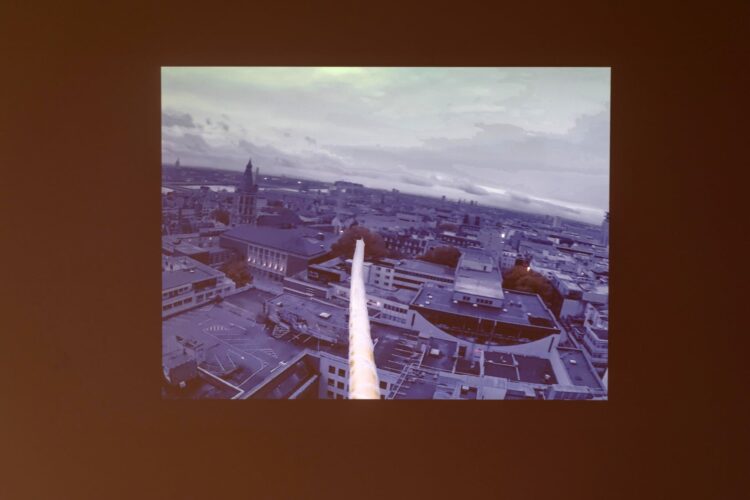
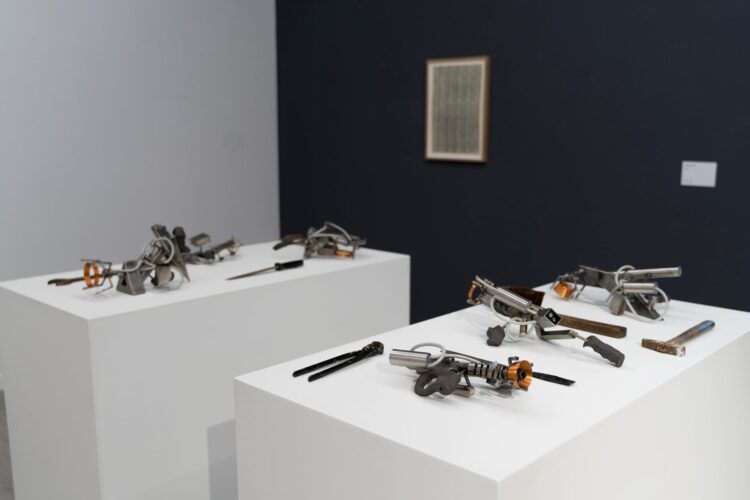
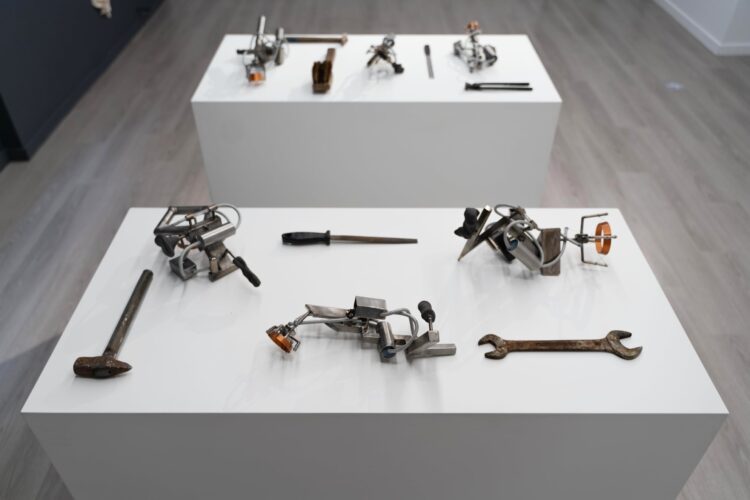
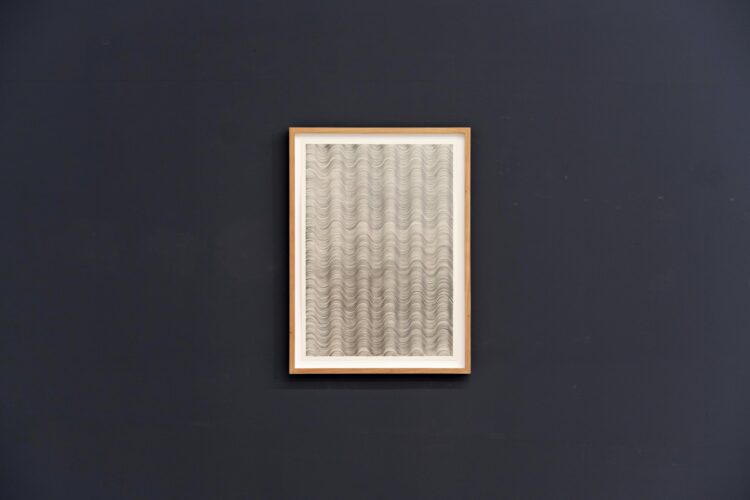
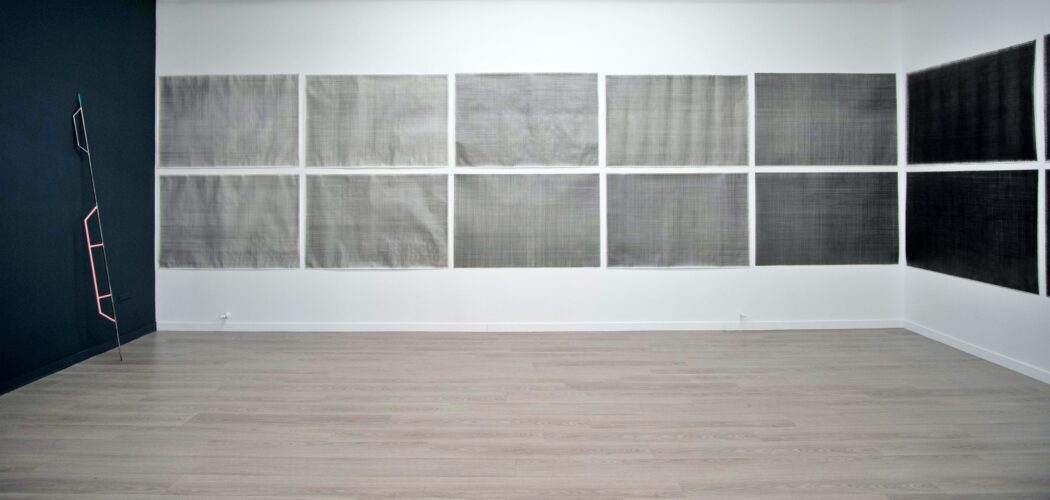
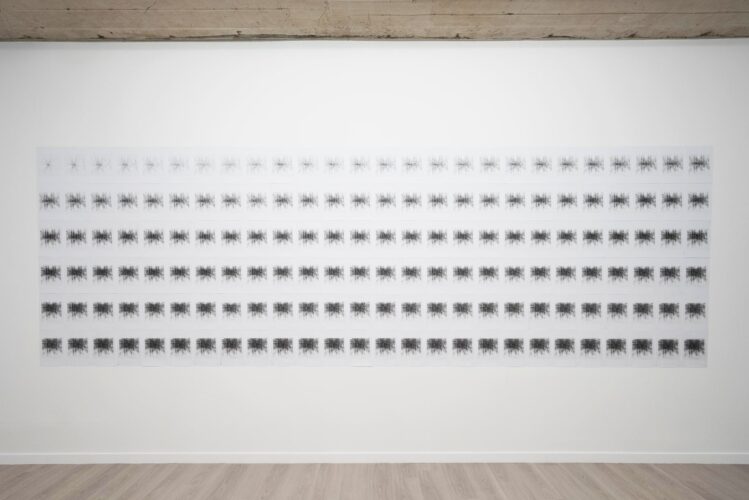
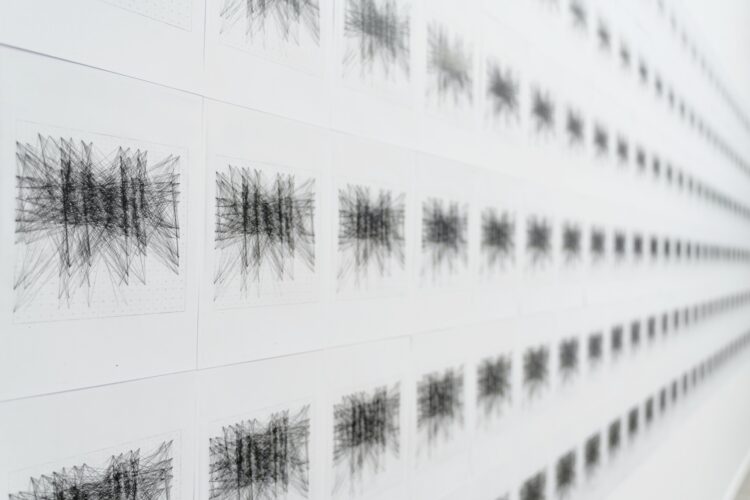
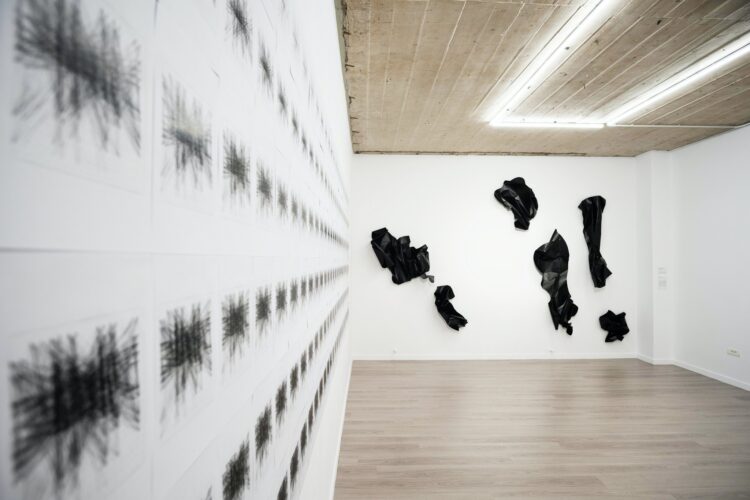
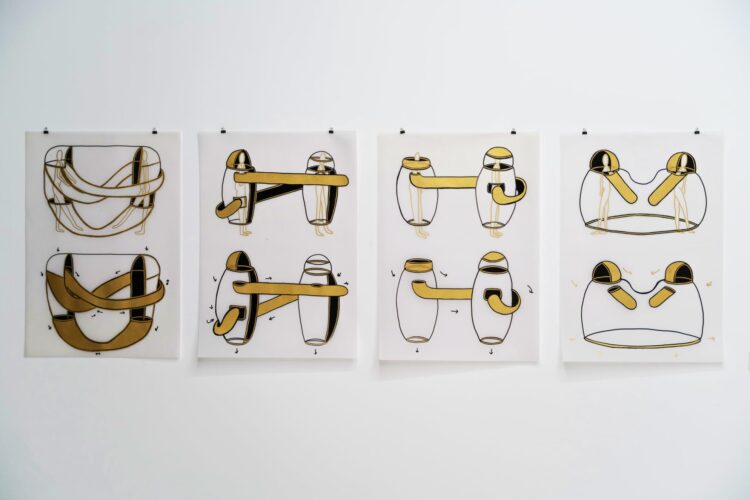
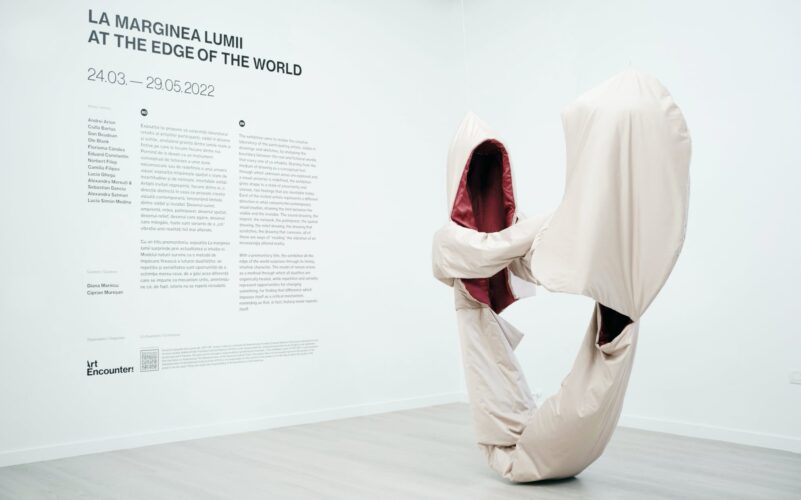
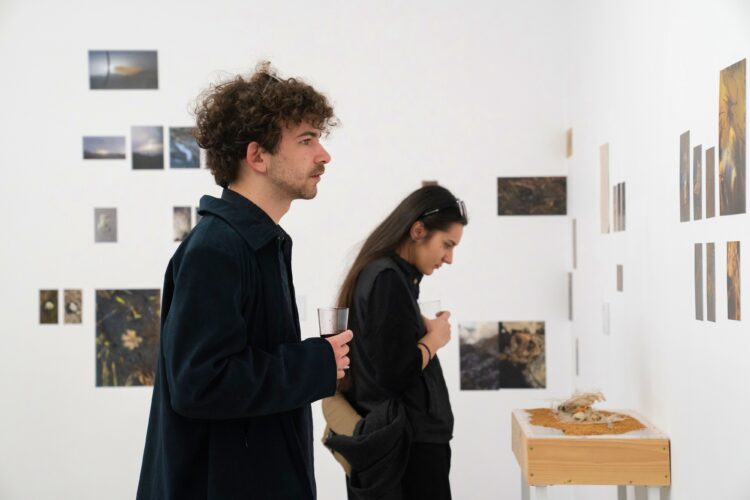
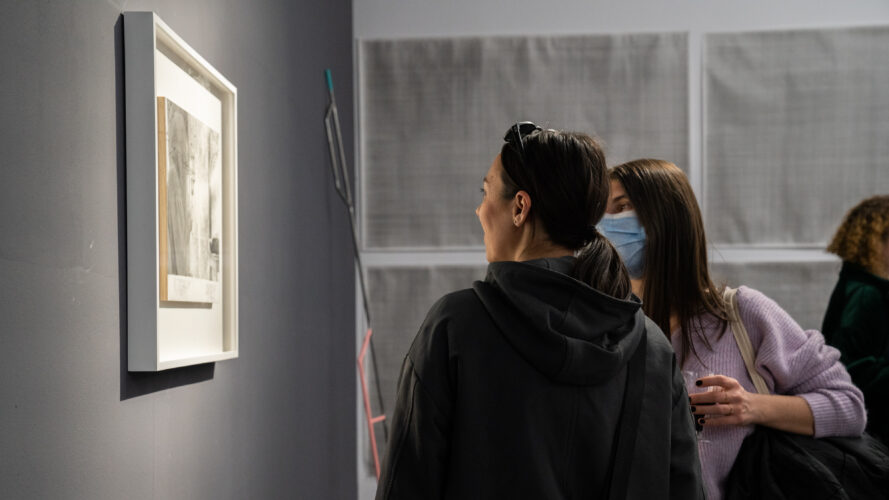
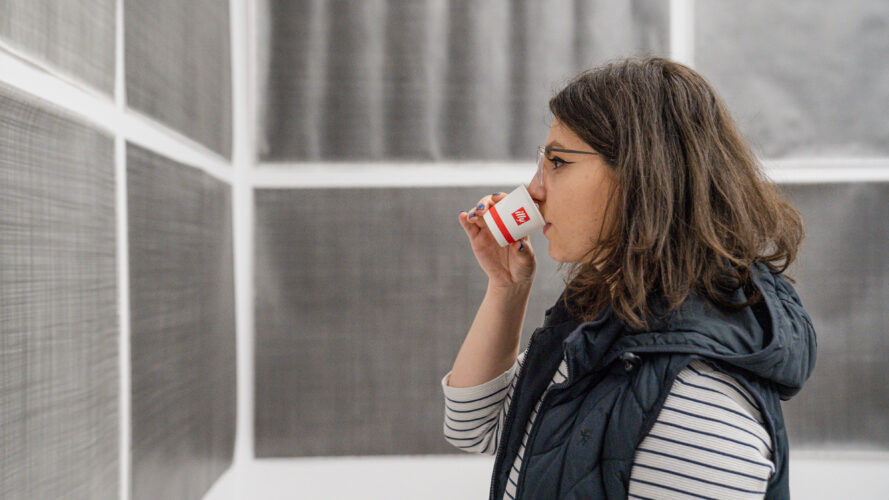
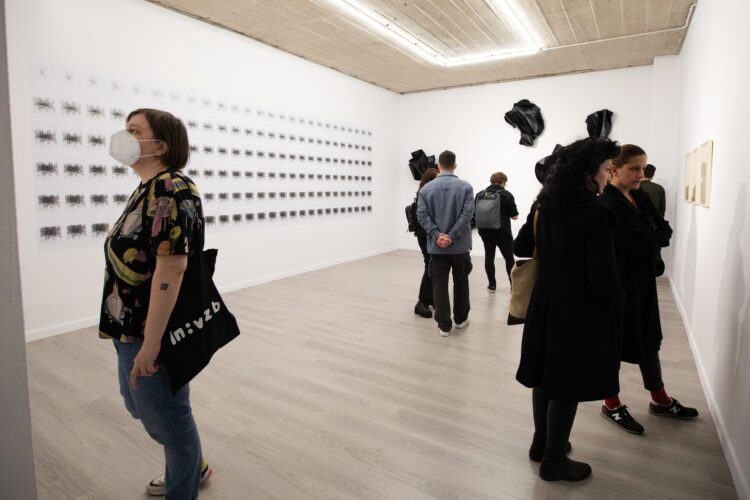
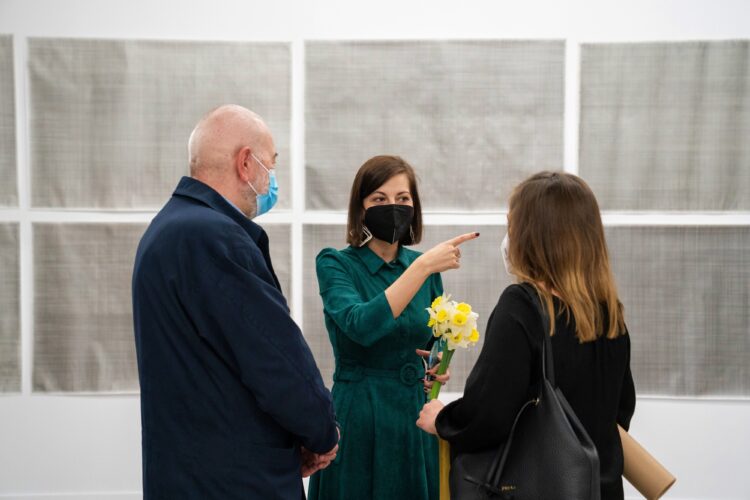
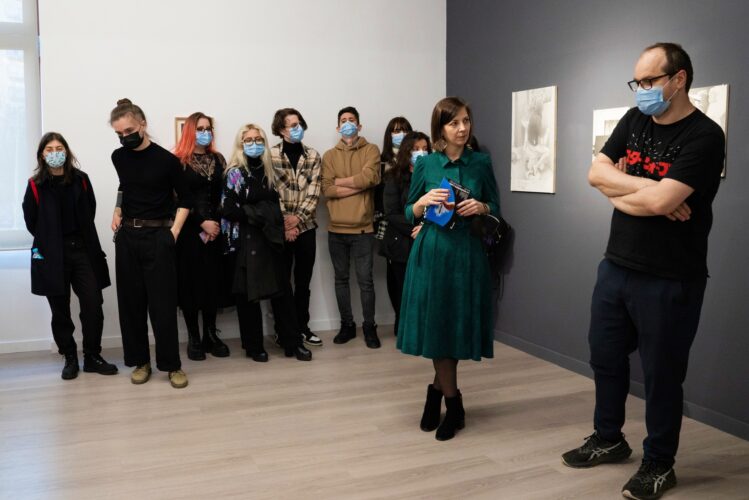
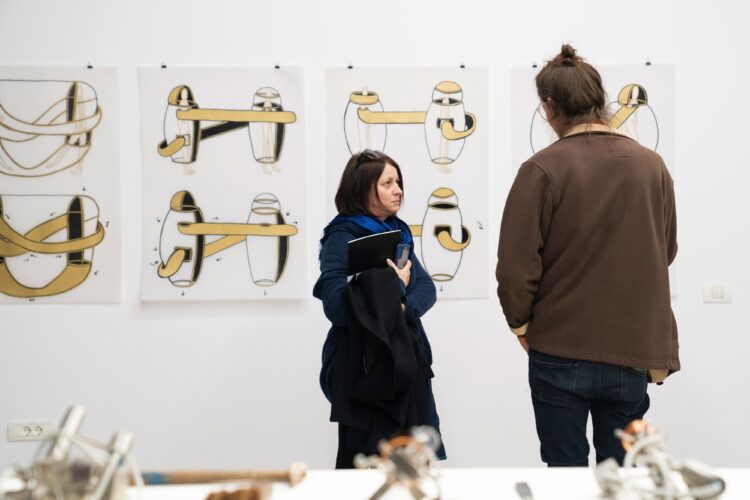
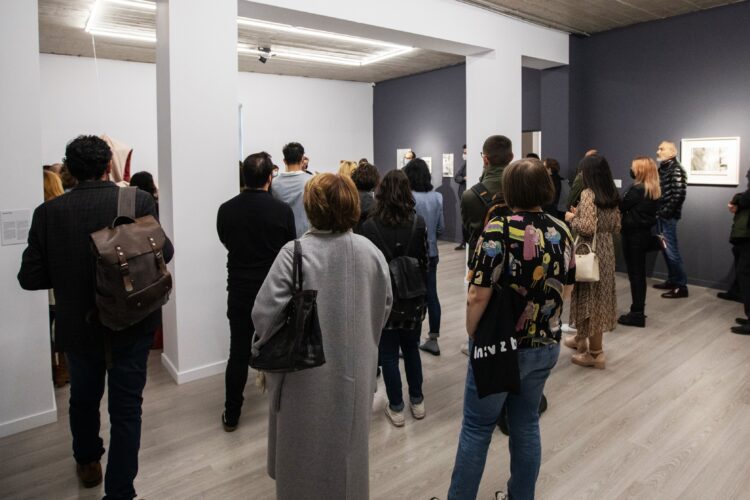
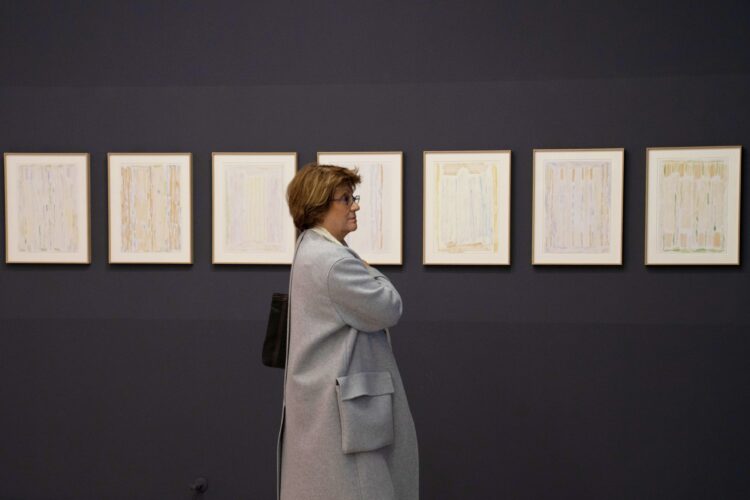
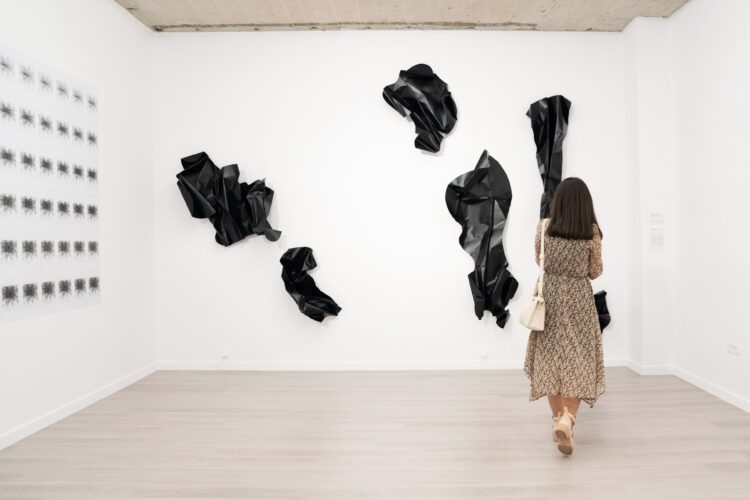
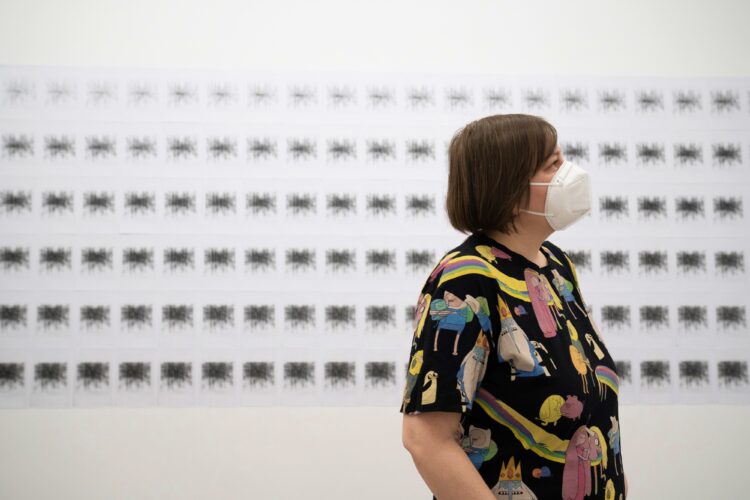
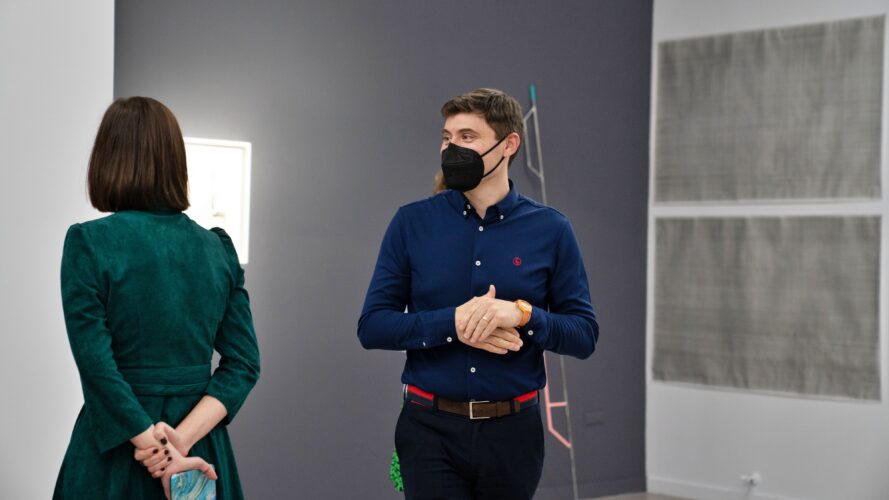
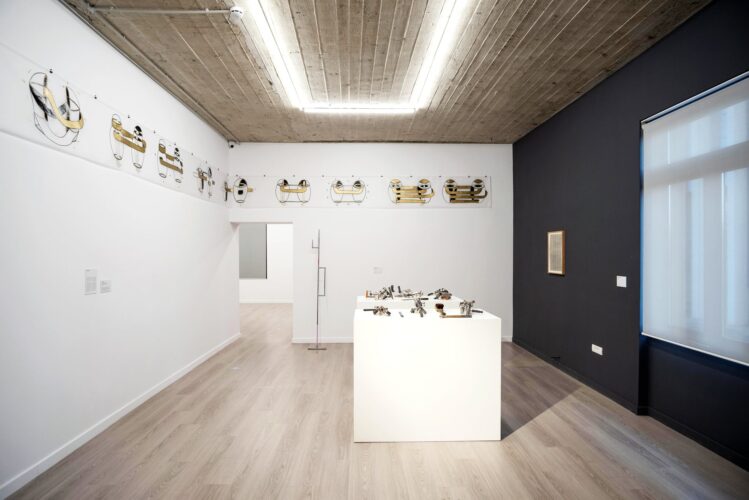
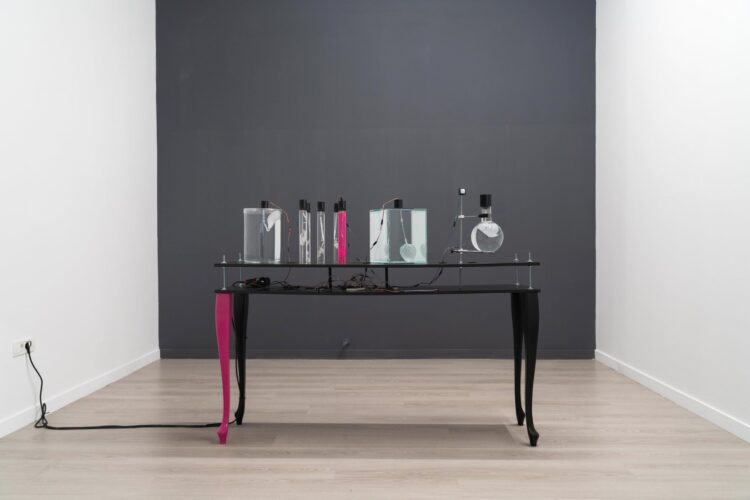
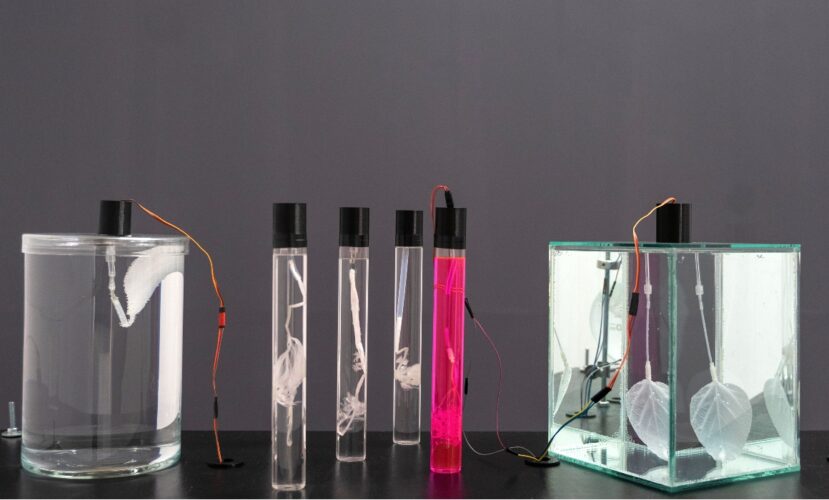
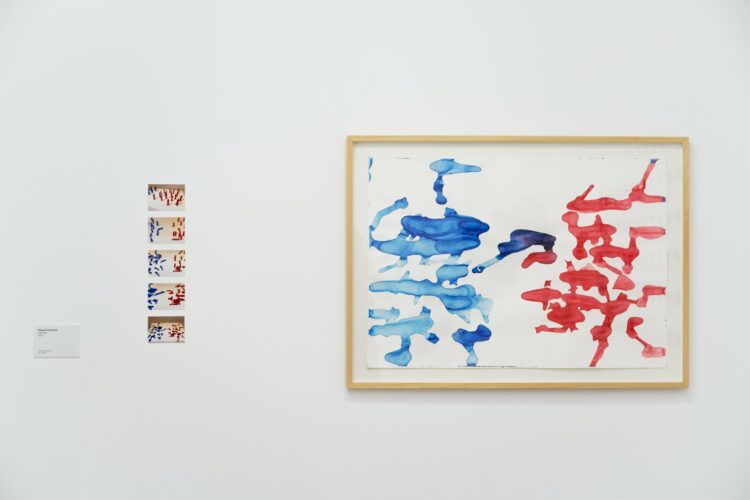
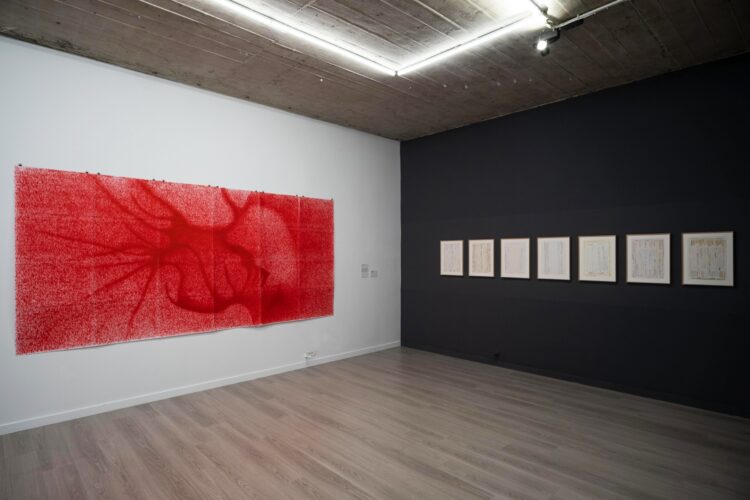
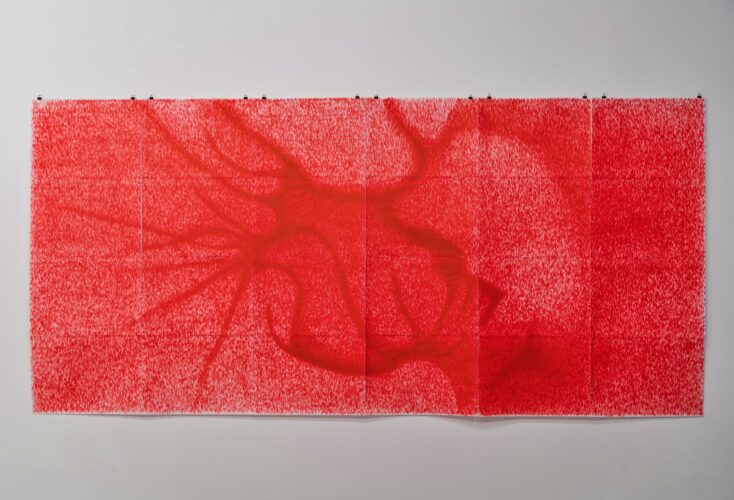
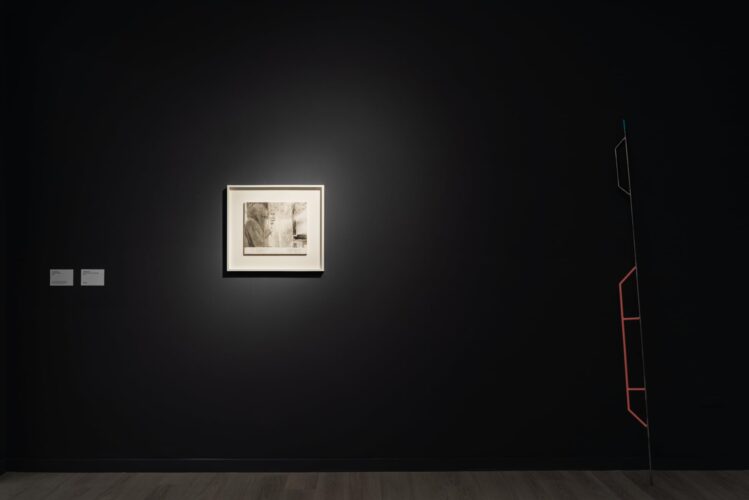
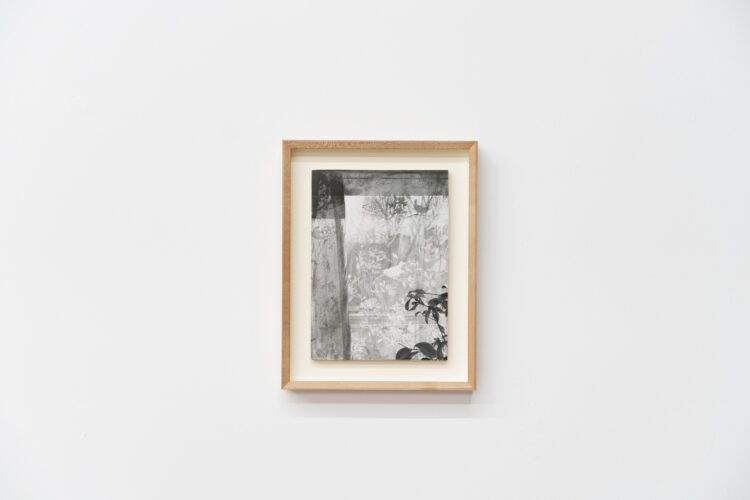
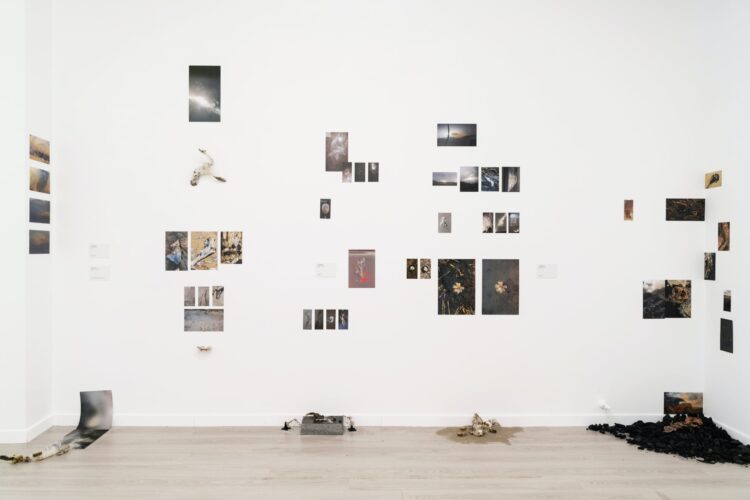
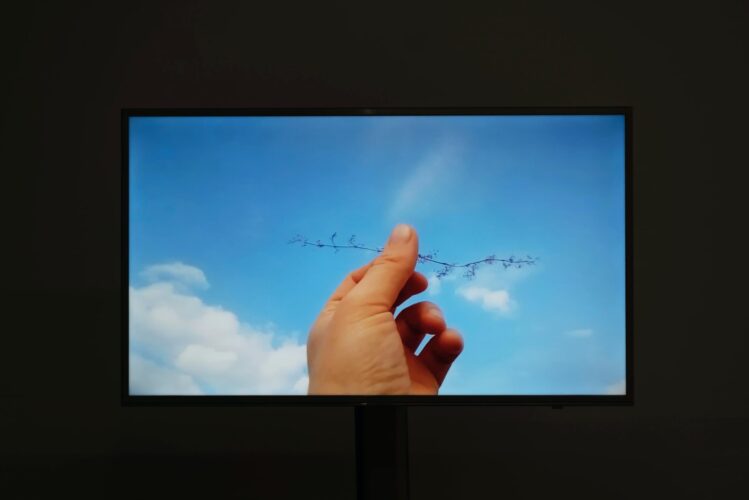
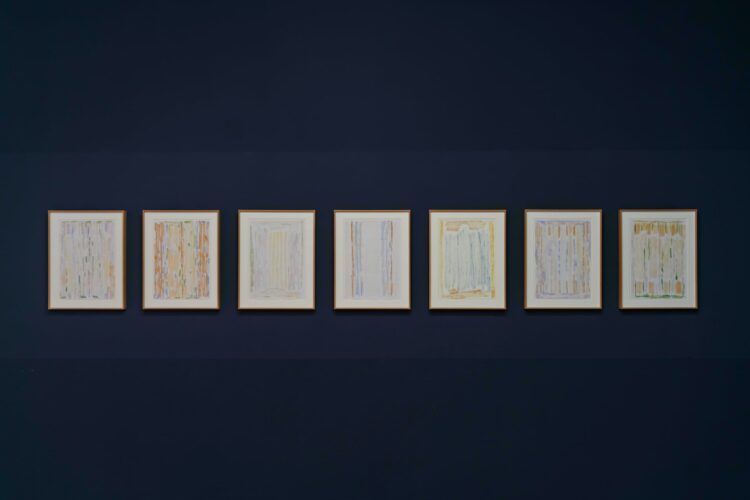
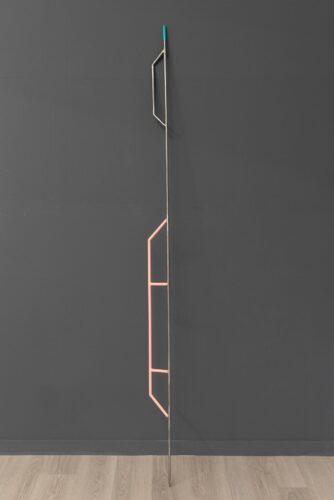
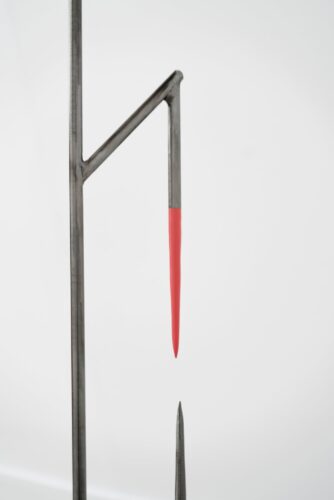
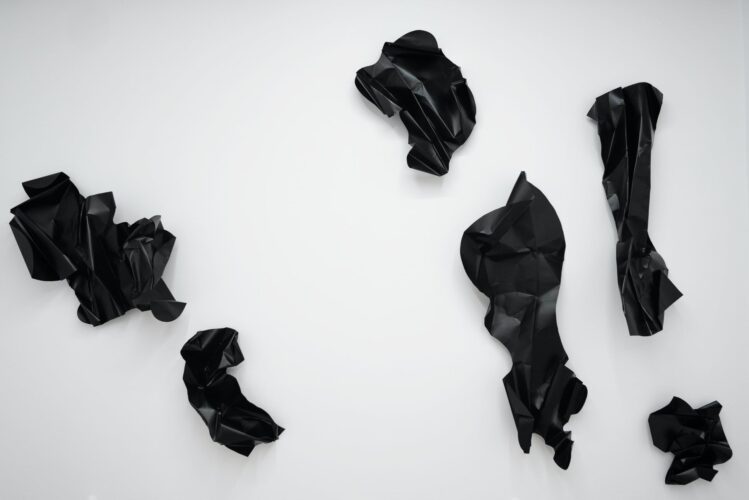
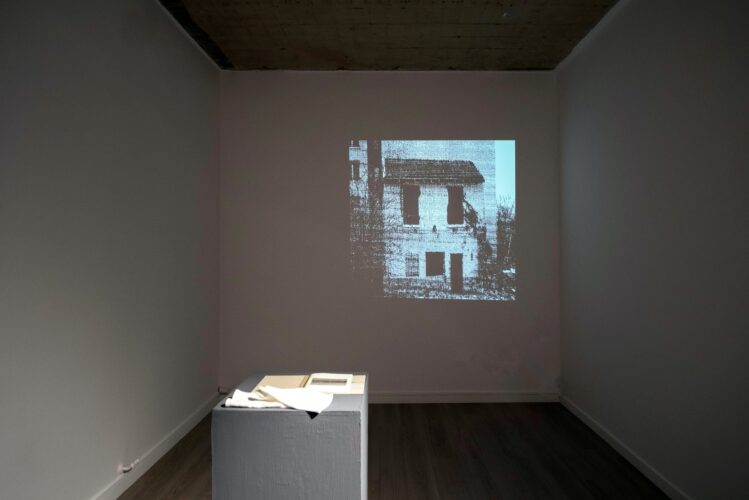
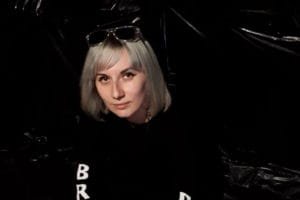
Comments are closed here.